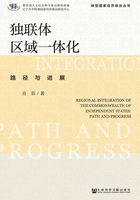
ABSTRACT
The planned economy countries started their market-oriented transformation which marks a new era of economic globalization with the end of the Cold War. The change of world political and economic systems caused by globalization has had a significant impact on the national political and economic development of the former Soviet Union, and at the same time it has also helped the nation have a new international role and new development opportunities. The international system has accelerated its adjustment of change, and the great power game has become more intense and complex since the 2008 financial crisis. Regionalization has become the main means and the stage area for world nations, especially for the great powers, in international competition and regional influence. Various FTA negotiations and integration such as TPP and TTIP have been quite porpular. In this“competitive region”background, the trend of the former Soviet Union has been reversed from the close federal integration to the separation and regional cooperation for fragmentation. The economic and political competition of the non-homogeneous nations is driving the homogeneous states to seek super regional integration, which is also a new trend in the CIS region. Since Putin became president for the third time, he has continued to emphasize on promoting the regional integration with a new plan for the integration of the CIS; a new free trade area has been in operation for the CIS; Russia, Belarus and Kazakhstan have established a customs union and unified economic space, and they started the construction of economic union on January 1, 2015. Russian strategic dilemma and“Look East”strategy after Ukraine crisis are all new phenomena of the regional landscape in the CIS region. Then, has significant progress been made in the CIS regional integration? What will the future of it be? What kind of development path have the CIS countries followed for their regional integration in the dramatic changes in the international system? All these problems need to be studied
The CIS region is an important part of the international political and economic system, and an important factor determining the change in the international political and economic system. At the same time, the direction of development of the regional integration and cooperation of the Commonwealth of independent countries will also have a significant impact on China in its international environment, diplomatic strategy and selection of regional cooperation, which makes it necessary to re-examine the relative CIS regional integration problems mentioned above in order to help China with something that it can learn for its designig and participating in regional integration.
Based on the logic and the problems, the main contents of this book are as follows:
Chapter One elaborates on the background, the significance of the research, the comments on the key relevant research literature, and the research question. At the same time, it also explains the research methodology, innovation, main content, and the structure arrangement of the research.
Chapter Two mainly consists of two parts. The first part is the definitions of“integration”in politics and economics and the definition and the measure standards that research defines and uses in terms of inreginal integration and process. No regional integration research can be done without the definition of the connotation of regional integration, especially theCIS integration that faces controversy. The second part is the establishment of an analysis framework on a theoretical basis with the introduction to different theories of regional integration in different disciplines and summaries of logic analysis.
Chapter Three is an overview of the CIS integration including the brief evolution of the integration, and the achievements and characteristics are studied in Chapter Four, Chapter Five and Chapter Six in more and specific analyses.
Chapter Four analyses the path of the regional integration of the CIS. This chapter shows that the region has an evolutionary path for its regional integration different from that of the European integration by analysing the choices of different dimensions of regional integration in the internal and external constraints. The paper holds that the CIS region integration does not follow the European integration from low to high, or from economic integration to political integration of successive evolution. But to some extent, it is a development process of political integration before economic integration and sub-regional integration before entire integration. The CIS development path of regional integration reflects pragmatism under the conditions of international and regional development with flexiabilty of solving problem within its capacity.
Chapter Fifth and Chapter Six analyse the progress of the regional integration of the CIS. Chapter Five deals mainly with the regional trade, investment facilitation and empirical analysis of its economic effect. Chapter Six has a normative analysis of the construction of regional governance in the CIS region, of collective security cooperation and of the political cooperation and the construction of political community. The results show that some progress and achievements have been made in the regional integration of the CIS, but in general, the level of the regional integration is still low. The institutional arrangements of the regional integration are put before the economic and political integration in practice with the characteristics of a man-made design and subjective driving. The integration is top-down, rather than bottom-up induction in practice.
Chapter Seven copes with the prospects of the regional integration of the CIS and something that can be learnt from it. It summarizes the main factors affecting the development prospects of the regional integration of the CIS by putting the development process, the achievements and the problems of the integration briefly, reaches the basic conclusion of this research on the basis of the above arguement, and offers something that China can learn.